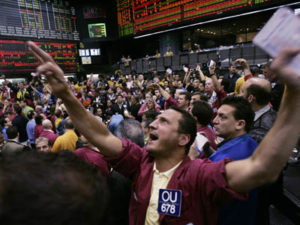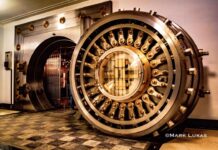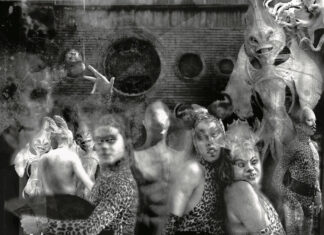While it may come as a surprise to most individual investors, there are much larger, parallel, and largely opaque markets, called dark pools, where billions of dollars in equities, bonds, and foreign currencies are traded daily that are invisible to the public.
This is the world of institutional trading. Because this market is huge and global, the strategies and quantities of securities being traded can literally move their respective markets.
As a result, this institutional trading is done in secret on legal, private, alternative trading systems (ATS) called “dark pools.” These pools began after the SEC made a regulatory change in 1979 because traders wanted lower execution costs and did not want competitors to know what, when, the price, and quantity of instruments they were trading. As a result, dark pools developed because they do not publicly display prices. Today, approximately 40% of all institutional trading in the U.S. happens through dark pools.
Changes That Created Dark Pools
Since the 1980s, the NYSE and other regional stock exchanges began coming under more intense criticism from institutional customers who complained that exchange specialists were engaged in insider trading or front-running orders in equity and currency markets and were not executing customers’ trades at the best available prices. 
To answer this criticism, stock exchanges enacted new block trading rules that made it easier and faster to execute large orders. However, the market crash of 1987, prompted by flaws in executing program trades from large institutions, and the 1994 NASDAQ price-fixing scandal, demonstrated that more far-reaching reforms were needed.
In 2005, the SEC released the Regulation National Market System (Reg. NMS) and opened the NYSE to automated trading. This was followed by another SEC rule change in 2007 that allowed for more competition, including the formation of less regulated ATS. By the early 2000s, the NYSE accounted for 80% of U.S. trading volume, but by 2019 it had slipped to just 24%. While this increased competition, it also raised concerns about disruptions caused by market fragmentation.
Aside from these critical regulatory changes, advances in financial communications technology accelerated new hybrid strategies, such as flash and algorithmic trading that relied on speed, large order sizes, and liquidity to contain trading costs. All these were available in the dark pools, but soon there were problems. The “flash crash” of 2010, an event that lasted about 36 minutes and used stocks, futures, options, and ETFs to wipe out almost $1 trillion in market value, showed that more regulation was needed to regulate high-frequency trading.
Definition and Examples of a Dark Pool
Dark pools are part of the regulatory and technological evolution of institutional trading. The participants in these digital private markets are institutions (pension funds, mutual funds, banks), corporations, sovereign wealth, hedge, and private equity funds.
Dark pools offer very specific trading methods, but they broadly work in two ways: they can match buyers and sellers at prevailing exchange prices (such as the midpoint between the bid/ask exchange price) or they can operate as limit order books that execute trades based on price and time priority.
In practice, dark pool trading provides some important benefits, such as the ability to trade stocks in large volumes while minimizing information leakage. This protects fund orders, to a certain extent, from market participants that would seek to profit from the knowledge of a fund’s trading intentions or strategies. Protecting confidential trading information reduces fund trading costs and provides greater returns to their investors.
Purposes of Dark Pools and How They Work
The origins of dark pools are tied to five factors: the explosion in institutional trading volumes, the need to contain trading costs; the development of faster and cheaper computerized-reliant strategies; regulatory changes; and, the need for trader confidentiality.
Today, there is more trading done daily on ATS than on the NYSE, according to Bloomberg. And while they are not well-known, the SEC lists 60 ATS that were operating as of April 2021.
The popularity of ATS also stems from its specific trade execution formats and specialties. Almost all ATS run as electronic limit order book markets. Some operate on a continuous trading basis throughout the day, while others are block trading-cross platforms. Some operate as non-displayed limit order books, while others execute orders at the exchange midpoint, and others quickly accept or reject incoming orders. They also charge lower fees than traditional exchanges.
How These Pools Affect Individual Investors
While the ATS market has expanded, it is still not clear how these markets impact the public stock exchanges where most trades affecting individuals are conducted.
According to an Investment Company Institute (ICI) spokesman, “dark pool trading provides some important benefits, such as the ability to trade stocks in large volumes while minimizing information leakage.” In an email response, the spokesman added that “this protects fund orders, to a certain extent, from market participants that would seek to profit from the knowledge of a fund’s trading intentions or strategies. Protecting confidential trading information reduces fund trading costs and provides greater returns to their investors.”
Anonymous Trading is Becoming More Popular
The growing popularity of dark pools worldwide and their impact on public markets have attracted the attention of regulators in the U.S., Australia, Canada, Australia, the European Commission, and the International Organization of Securities Commissions (IOSCO). The regulators are concerned about issues related to market quality, price improvement, and market integrity.
In the U.S., the SEC in 2018 adopted rules, known as Rule 304, as amendments to Regulation ATS, to require disclosures about dark pools. These rules require the filing of Form ATS-N which includes a variety of disclosures.
In an 85-page report on this topic issued in 2012, the CFA Institute said via e-mail that dark pools can improve market quality, but “only up to a certain threshold.” The report found that “when the majority of trading occurs in dark pools, the benefits of competitive pricing and market quality will suffer.” Alternately, one academic found that “under natural conditions, adding a dark pool improves price discovery on the exchange.”
Since 46% of American investors own mutual funds, regulators have focused on how dark pools affect mutual fund trading. While mutual funds strive to lower trading costs, many have opted to internalize their trading activity in more transparent systems, rather than participate in dark pools. But some have not.
According to Doron Narotzki, associate professor of accounting at the University of Akron, some smaller mutual funds are using dark pools because they “need the trade volume to survive just like any other investment platform, and nowadays most dark pools will allow smaller investors to buy and sell through them. As a result, even smaller mutual funds can now use dark pools in order to make their orders and take advantage of what dark pools have to offer.”
So where does this leave individual investors? Professor Narotzi said via e-mail that since 2014, the Financial Industry Regulatory Authority (FINRA) “has worked to improve market transparency and improve investor confidence by displaying activity levels in each ATS, including all dark pools.”
“While the trades in these facilities are made available on a real-time basis to investors and professionals through securities information processors (SIPs), these trades are not attributed to a specific ATS or dark pool. Under FINRA’s transparency initiative, the public is able to see the total shares traded each week by security in each ATS or dark pool. This data is provided to the non-professional investing public free of charge and is available through a FINRA website,” Professor Narotzki said by email.
Internalization involves broker/dealers (firms or persons who trade for their own account or customers), on a regular basis. Since internalization requires that trade prices be as good or better than the national best bid and offer (NBBO), broker/dealers have adopted to make internalization the preferred trading method for public customers. As a result, the CFA report said almost all retail investor orders were traded internally among broker/dealers.
In contrast, this same report said that since ATS’ are private, they are exempt from showing price quotations and can limit access to their trading platforms. They also are not required to publicly display price quotations and can restrict access to their crossing systems.
Key Points To Remember
- Dark pools are private electronic markets that trade stocks, bonds, and currencies where traders’ orders are not publicly displayed, regardless of size.
- The impact of dark pool trading on individual investors is unclear, but regulators have focused on the potentially negative impact of dark pools on price discovery and market quality.
- SEC rules state that the prices of dark pools trades, and other off-exchange trades, must be reported to a consolidated data feed within minutes of being made.
- Dark pool exchanges are highly specialized and cater to a variety of sophisticated trading strategies and different order execution models.
- Trades on dark pools are done at a lower cost than those done on traditional exchanges, but there is less transparency.
- The trend is for dark pools to continue to capture more equity trading volume compared to traditional public exchanges where there is more trading transparency.
Questions Individual Investors Should Ask
How do I see what portion of a stock’s trades take place in a dark pool?
Based on SEC and FINRA regulations, individual investors can see order flow numbers to ATS’, but not individual trades. By definition, dark pools are secret, so that excludes details about stock trading. As a result, dark pools fall under the jurisdiction of the Regulation Alternative Trading System (Reg. ATS). “ATSs are not required to publicly display price quotations and are able to restrict access to their crossing systems and internalization pools,” according to the CFA Institute.
What are the names of the dark pool trading sites?
The SEC lists all the dark pools, or ATS, at this SEC site. Most of the major ATS are broker-dealers and are primarily located in New York. These ATS’ are under the jurisdiction of the SEC and FINRA. The SEC list includes all types of dark pools that primarily trade stocks and bonds that accommodate a variety of algorithmic strategies, such as high-frequency trading (HFT) strategies that send portions of orders to different ATS’ in various sequences. Other strategies use arbitrage; market-making (trying to make money on the bid-ask spread); directional strategies (betting on the market’s overall direction for the day); matching orders at the mid-point of the bid-ask spread; and trading based on advanced mathematical models.
What percentage of total stock market trading takes place in a dark pool?
It is estimated though that approximately 40% of all institutional trading happens through dark pools. This trading was done on 60 ATS, as of April 2021, according to the SEC. While estimates vary on dark pool activity in April 2019, about 39% of U.S. stock trading was done on dark pools and other off-market exchanges, according to a Wall Street Journal report. Dark pools are growing in popularity and Bloomberg estimates that there are more shares now trading in dark pools than on New York Stock Exchange.
The U.S. stock market has fragmented into 12 public exchanges and 60 ATS’ (alternative trading systems), most of them dark pools. Looking ahead, the CFA Institute found that “market shares for almost all (publicly traded) exchanges continue to trend downward while off-exchange volume increases.”











